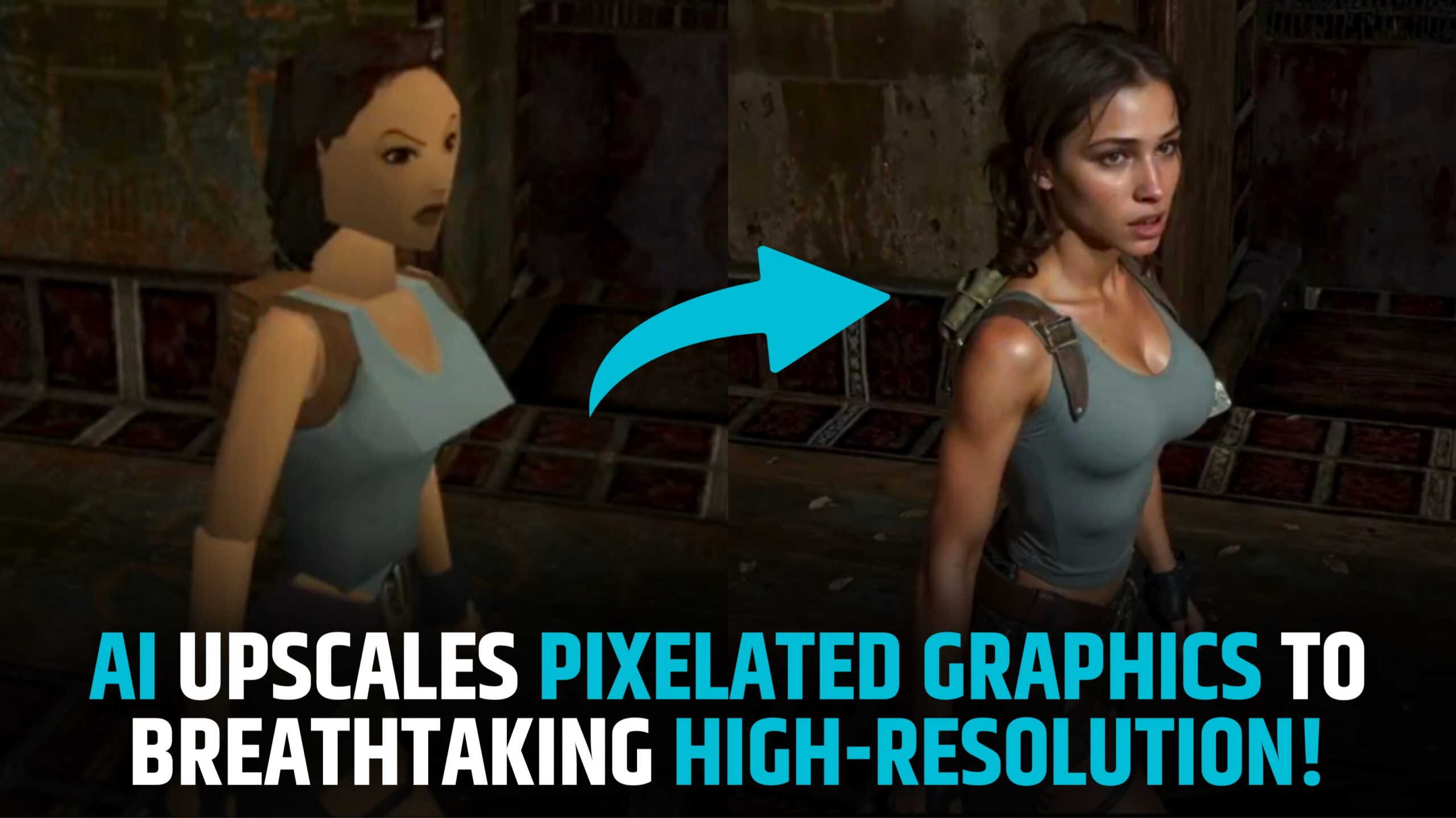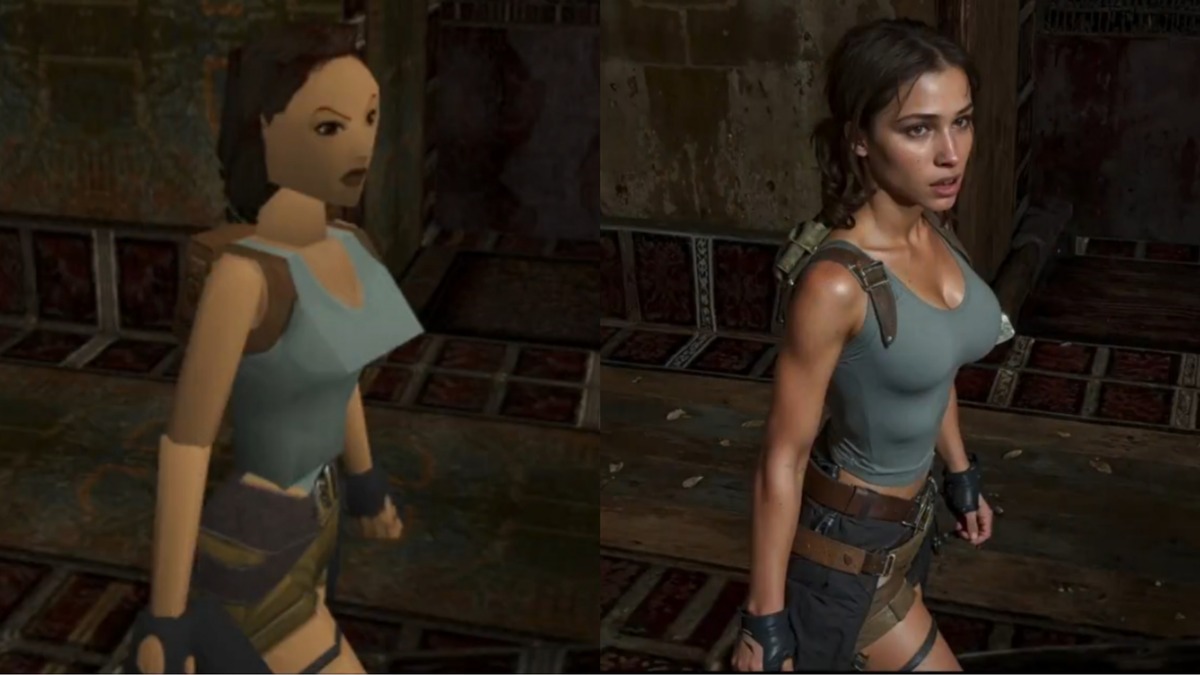Remember the iconic Lara Croft, the adventurous archaeologist from the classic PlayStation game Tomb Raider? Well, thanks to the power of AI, she’s back looking better than ever.
Recently, an AI enthusiast used Magnific AI to transform Lara Croft’s low-resolution PS1 graphics into stunning, high-resolution graphics. The process involved using specific prompts and multi-step upscaling techniques to enhance the details and overall quality of the image.
The results are truly remarkable. The once pixelated Lara now boasts smooth skin, detailed facial features, and even individual strands of hair. The image quality is so good that it’s hard to believe it was once a low-resolution sprite.
How AI Upscaling Works
AI upscaling is a machine learning technique that uses artificial intelligence to improve the resolution of images. It works by analyzing the image and then generating new pixels that fill in the gaps between the existing pixels. This can be done in a variety of ways, but some common methods include:
- Super-resolution: This technique uses a machine learning model to learn the patterns in high-resolution images and then applies those patterns to low-resolution images to improve their quality.
- Generative adversarial networks (GANs): GANs are two neural networks that compete against each other. One network, the generator, tries to create realistic-looking images, while the other network, the discriminator, tries to distinguish real images from fake images. Over time, the generator gets better at creating realistic images, and the discriminator gets better at spotting fake images. This process can be used to improve the quality of low-resolution images.
Also Read Increase Your Creativity With These Amazing ChatGPT Prompts
The Future of AI Upscaling
AI upscaling is a rapidly developing technology with the potential to revolutionize the way we experience digital media. In the future, we can expect to see AI upscaling being used to improve the quality of movies, TV shows, video games, and even our own personal photos and videos.
Beyond Lara Croft: AI Upscaling for Real-World Applications
While the upscaling of classic video game graphics like Lara Croft is impressive, the potential applications of AI upscaling extend far beyond the realm of entertainment. Here are some real-world examples:
- Medical imaging: AI upscaling can be used to improve the quality of medical images, such as X-rays and MRIs, which can lead to earlier and more accurate diagnoses.
- Security and surveillance: AI upscaling can be used to improve the quality of low-resolution security footage, which can help to identify criminals and prevent crime.
- Archaeology and historical preservation: AI upscaling can be used to restore and enhance historical images and artifacts, which can help us to better understand our past.
The ethical considerations of AI Upscaling
While AI upscaling has the potential to be a powerful tool, there are also some ethical considerations that need to be addressed. For example, AI upscaling can be used to create fake images that are difficult to distinguish from real images. This could have a negative impact on our ability to trust the information we see online. Additionally, AI upscaling could be used to create deepfakes, which are videos that have been manipulated to make it appear as if someone is saying or doing something they never did. Deepfakes could be used to spread misinformation or damage someone’s reputation.
It is important to be aware of these ethical concerns and to use AI upscaling responsibly. As this technology continues to develop, it is important to have open and honest conversations about the potential benefits and risks.
⚡ OK, this is impressive 🤯
I also wanted to try upscaling Lara Croft from PS1 to super high resolution! Mini step by step tutorial 👇
1/ First Upscaling:
– Preset: Standard
– Creativity: 3
– HDR: 0
– Resemblance: -1
– Prompt: “Screenshot, (detailed eyes:1.2), (detailed… pic.twitter.com/8wYRjhQNMA— Javi Lopez ⛩️ (@javilopen) December 2, 2023
Conclusion
AI upscaling is a powerful tool that has the potential to revolutionize the way we experience digital media. It is still in its early stages of development, but it has already shown promise in a variety of applications. As AI upscaling continues to improve, we can expect to see it being used in more and more ways in the future.





